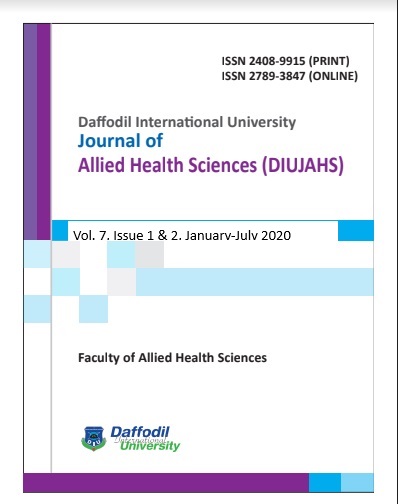A REVIEW ON BACTERIAL ATTACK IN THE MEAT BEFORE AND AFTER COOKING
DOI:
https://doi.org/10.36481/diuhls.v07i1-2.8zsqey46Keywords:
Foodborne Disease, Raw Meat, Cook Meat, Antibiotic ResistanceAbstract
The study aimed to review the bacterial attack in the meat before and after cooking. To complete this review, 78 articles have been collected from google scholar, PubMed, and other online websites, and the data has been analyzed using Microsoft excel 2019. This study determined the presence of bacteria in meat both before and after being cooked. Reviewing around 78 articles confirmed bacteria could live in crude and cooking meat. Raw meat may commonly contain Salmonella, E. coli, and S. enteric bacteria. The 10.0% E. Coli in raw beef and 19.70% have S. enterica, the other 26.20% contain Salmonella, and some bacteria are sensitive to water phase salt. Normal salt decreases the quantity of certain lactic corrosive microorganisms in the gut of mice and people. Based on the review, Staphylococcus aureus is sensitive to 10.0% water phase salt, and Yersinia enterocolitis-ca is susceptible to 7.0% water phase salt. In summary, Salmonella and other group bacteria can spread with cook meat and may produce multidrug resistance such as antibiotic resistance. Since it is a public health threat globally. So, to reduce the microbial attack, raw meat should be properly stored, processed, and public awareness should be increased.

